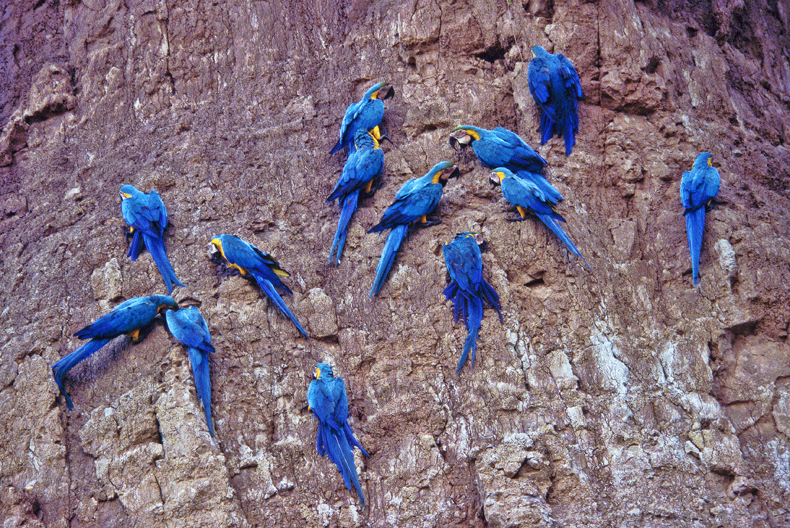
Of all the paths you take in life,
make sure a few of them are dirt.
John Muir
I am in the South American jungle, at the muddy outpost of Puerto Maldonado, capital of eastern Peru. It's a gold rush town with a distinctly frontier feel, like Tombstone, only muggier. I, too, am on the hunt, but not for gold. I come in search of rainbows, of the feathered variety, the rowdy and regal lords of squawk. I'm talking about parrots and macaws.
This is the heart of Amazonia, perhaps the most accessible godforsaken spot on the planet. The only highway in these parts is the Rio Madre de Dios, a tributary of the mighty Amazon. A two day journey upriver, through a 50 thousand square mile (the size of Arkansas) "heart of darkness," will bring me to Tambopata, home of the world's largest known clay lick. This 100-foot wall, scoured by flood and rain, rises abruptly from the river's edge. When sunrise clears the morning mist and illuminates the great wall, it triggers one of the most dazzling avian spectacles in the world. A raucous crowd of parrots and macaws, thousands of them, will fill the sky, then splatter their rainbow colors on the good earth, to screech, squabble, and eat clay (lots of theories but no one really knows why). And I have a front-row seat and telephoto lens for the show.
Scientists puzzle over this phenomenon, theorizing the birds need the soil for minerals they lack, or to neutralize poisons in various seeds they eat. These beautiful birds have long been threatened by collection for the pet industry. On the plus side the Tambopata region has recently been declared a national park and former hunters are being enlisted as guides for ecotourists.